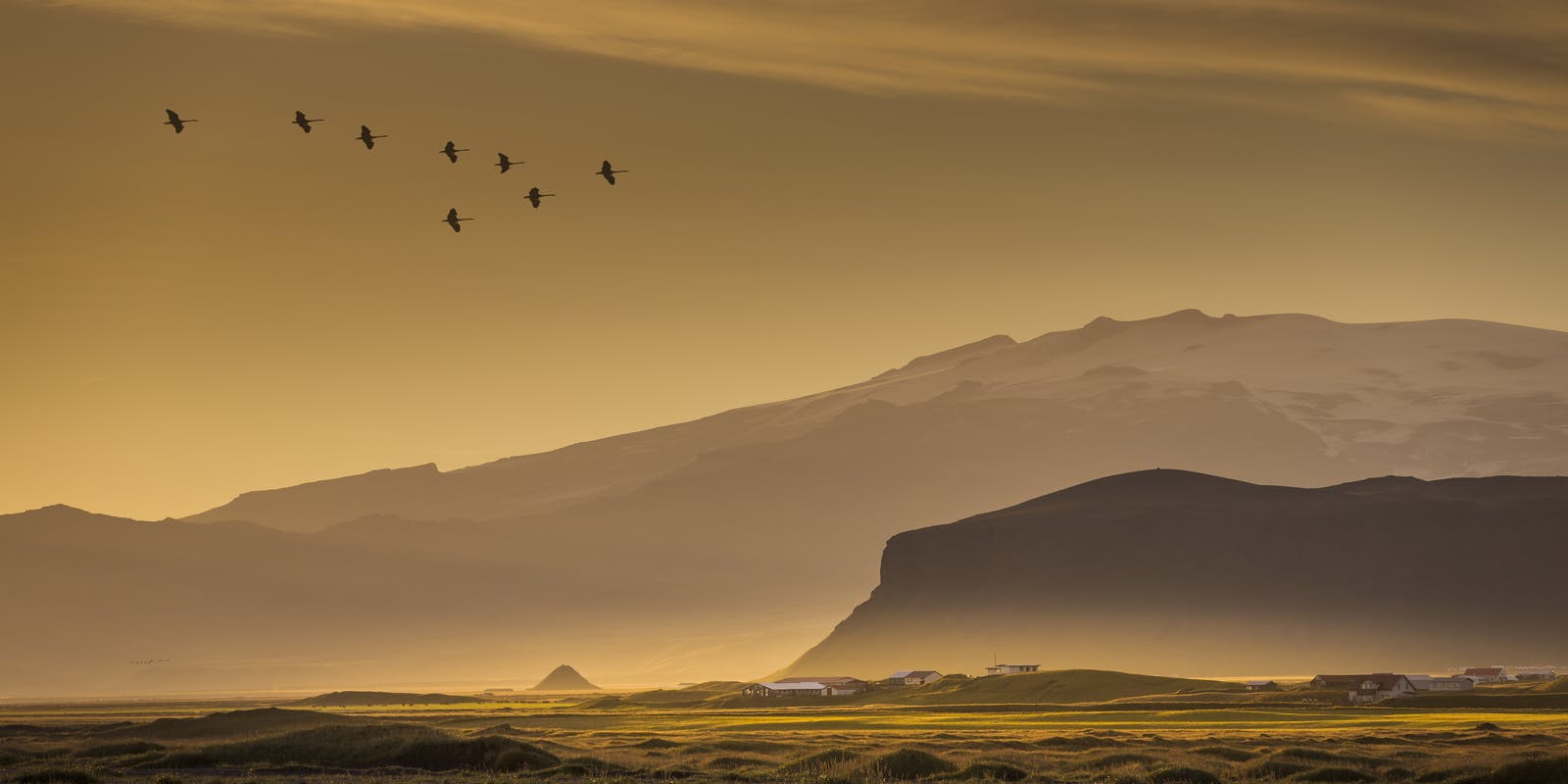
Guide to Eyjafjallajökull Volcano
Eyjafjallajökull became Iceland’s most famous volcano after its eruption in 2010 halted air travel across Europe, stranding tens of thousands of people for days. Before Eyjafjallajökull made worldwide headlines, the volcano had been a popular destination to explore, and it remains so today, with a rugged and icy landscape.
An ice cap entirely covers Eyjafjallajökull; magma hitting the ice created a tremendous ash cloud during the eruption. The ice cap covers an area of about 78 square kilometres (30 sq mi), which feeds several outlet glaciers. When people joke that “Iceland is green, and Greenland is icy,” those who visit the Eyjafjallajökull region will think again. There is a lot of ice in Iceland, and the Eyjafjallajökull ice cap is the island’s sixth-largest glacier.
What type of volcano is Eyjafjallajökull?

Eyjafjallajökull is a stratovolcano that ascends to 1640 metres at its highest point. A magma chamber under the mountain feeds the volcano, part of a chain of volcanoes stretching across the island. Its nearest active volcanoes are Katla to the east and Heimaey and Eldfell to the south.
Eyjafjallajökull is thought to be related to volcano Katla in some way. Eruptions of Eyjafjallajökull have generally been followed by eruptions of Katla. However, Katla did not erupt following Eyjafjallajökull’s 2010 eruption. Scientists closely monitor the volcanoes’ activity, measuring the size and frequency of the tremors. Katla is expected to erupt in the near future.
Where is Eyjafjallajökull located?
Driving along the South Coast on the Ring Road brings you close to the volcano. The volcanic mountain range is visible when you go east on the Ring Road from Reykjavik and cross the Hellisheidi heath.
Is Eyjafjallajökull safe to visit?

Eyjafjallajökull is safe for travellers to visit and is seen on most tours of the South Coast in favourable weather. In the town of Hvolsvöllur, a visitor’s centre focuses on a family farm, Þorvaldseyri, which was one of the many that was damaged by the floods and ash fall of the most recent eruption. It is highly unlikely that Eyjafjallajökull will erupt again in near future, as there are typically hundreds of years between each eruption. Check out more glaciers in Iceland here.
When has Eyjafjallajökull erupted throughout history?
Since Iceland’s settlement in 874, Eyjafjallajökull erupted in the years around 900, 1612, and from 1821 to 1823. The 1821-1823 eruption was said to release an enormous amount of fluoride, which is believed to have negatively impacted the health of humans and animals at that time. The most recent eruption was in 2010.
Iceland is one of the most volcanically active regions in the world — if you’re curious which ones are still rumbling, explore the active volcanoes in Iceland.
Where can I learn about volcanoes in Reykjavík?

Perlan’s Forces of Nature exhibition allows guests to feel the power of volcanoes, earthquakes, and geothermal energy that powers the island. Guests will learn that volcanoes form when heat and pressure build up beneath the earth’s surface. The earth’s weak points tend to be along fault lines where tectonic plates converge or diverge, as in Iceland’s case.
Perlan’s exhibition shows that volcanic activity in Iceland is so diverse that researchers typically speak of “volcanic systems” rather than individual volcanoes. The island has 30 active volcanic systems, each with many types of volcanoes.
Is there a volcano show at Perlan?
Perlan has a volcano show that focuses on the volcanic eruption that began in Fagradalsfjall in March 2021. The eruption, only 30 km from Reykjavík, was the first volcanic eruption in this area in over 800 years, making it a historic event for the people of Iceland and the scientific community. At Perlan, guests can experience the Fagradalsfjall eruption in a mighty volcano show.
FAQ

How do you pronounce the name Eyjafjallajökull?
For Icelanders, it was amusing to hear foreign news anchors struggle to pronounce the name of the volcano on the nightly news. Clips were regularly shown on Icelandic television, and Icelanders laughed and imitated them. For the record, it’s pronounced EYE-ya-fyat-lah-YOH-kuht.
What is special about Eyjafjallajökull?
Eyjafjallajökull’s recent claim to fame came after the eruption in 2010. The eruption halted air traffic for several days and reminded the world that Iceland exists.
How many people died in the Eyjafjallajökull eruption of 2010?
There were no deaths from the eruption. There are warning systems in place, and people that were in the area evacuated. The most damage came from the ash cloud that darkened the area, making the air quality drastically drop.
About 800 people were evacuated in fear of dangerous glacial floods, which have destroyed Icelandic farms in the past. Locals were ordered to keep their animals inside, and those with respiratory problems were told they should also stay indoors as the air quality was very poor.







